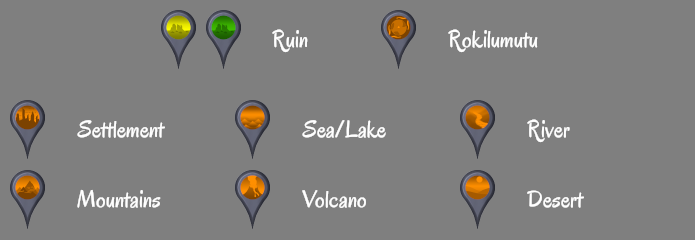The Conclusion of the Final War
The massive wave of attacks which ended the Final War.
The Conflict
Prelude
By the time of these attacks, the Final War had been going on for over 4 years. Both sides had grown weary and desperate, resorting to more brutal and dishonorable tactics over the years. Targeting civilians had become the norm rather than the exception, especially after the political leaders and socio-economic elites had retreated to secret shelters in the Ralenlos Mountains.
Deployment
On Taprunoma 32 at 25:16, the Ran-E-Zu Confederation launched all their remaining weapons of mass destruction towards the enemy's population centers. Two minutes later, the Rilanga Union started unleashing what was left in their own arsenal, attacking the population centers of the other side.
Battlefield
Both sides targeted the coastal regions around the three seas of what is now known as Mustik Hamesi.
- The cities around the Zugderi Sea were largely under Rilanga control.
- The cities north of the Zugnur Sea were closely allied with the Rilanga.
- The cities around the Zugzaspo Sea were largely under Ran-E-Zu control.
The Engagement
The first impacts of intermarine missiles were reported near the Zugnur sea at 25:24. Four minutes later, the Rilanga capital Iv Mikemba was hit and contact was lost shortly after. The Ran-E-Zu capital Azuru-Za was hit at almost the same time. Many more impacts followed in other cities, detonating either nuclear warheads or spreading chemical warfare agents across the coastal regions.
Outcome
By 26:00, all communication between the shelters and the rest of Ranul had broken down. Massive clouds of dust and ash made it near-impossible to assess the situation via satellites. The fact that night was falling over the inner side further complicated the investigation. Since there was no way left to fight, the war came to a sudden stop.
Aftermath
Approximately 297 million Rul were still living outside the shelters by the time the attack happened. Archaeologists later confirmed that the vast majority of them died as a direct result of the nuclear explosions. The rest probably succumbed to the radiation poisoning and chemical warfare agents within the following weeks, or died fighting other survivors for limited supplies.
Most of Mustik Hamesi was rendered uninhabitable for 7 years. As a consequence, the survivors were forced to stay in the Ralenlos Mountains, an area that had been rather barren to begin with. Famine and disease took out almost 20% percent of the remaining population by the time they could return to the coastal regions.
Historical Significance
Legacy
English
In destruction exists a lesson.
Rile
Dotengi e palru golkiz.
Rile
Dotengi e palru golkiz.
Included under Conflict
Conflict Type
Battle
Battlefield Type
Planetary
Start Date
1 NZR, Taprunoma 32, 25:16
Ending Date
1 NZR, Taprunoma 32, 26:00
Conflict Result
global devastation and near-extinction of life on Ranul
Location
Belligerents
Rilanga
Ran-E-Zu
Strength
~ 122300000
~ 138400000
Casualties
~ 116500000
~ 133200000
Objectives
defeat the Ran-E-Zu Confederation
defeat the Rilanga Union







Comments